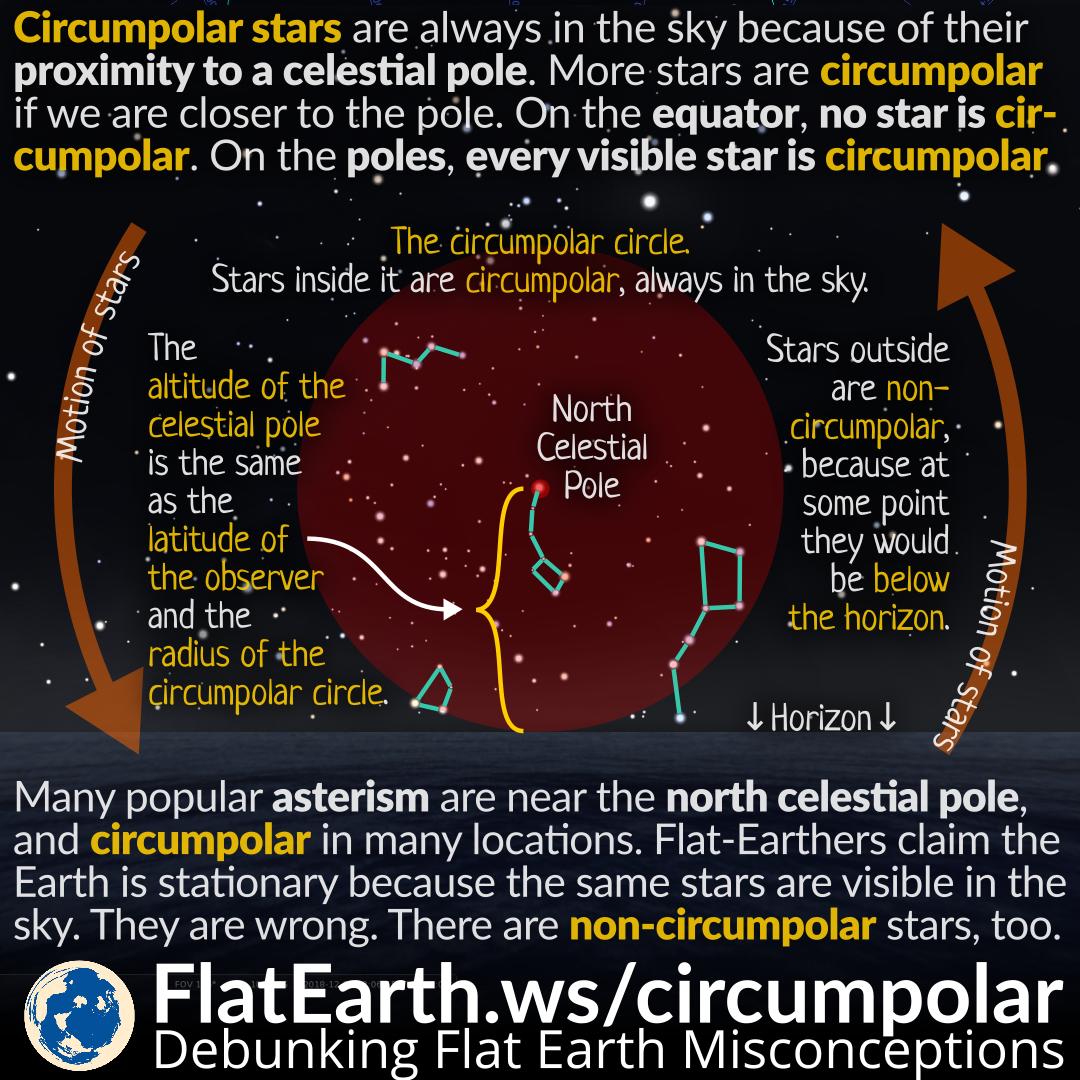A circumpolar star is a star, as viewed from a given latitude on Earth, that never sets below the horizon due to its apparent proximity to one of the celestial poles. Circumpolar stars stay up there in the sky, even during the day.
Flat-Earthers claim the Earth is stationary because the same stars are always visible in the sky. They are wrong. Only circumpolar stars are always in the sky. There are others that are not circumpolar. Some are only visible during certain times in a year.
As Earth rotates daily on its axis, the stars appear to move in circular paths around one of the celestial poles. Stars far from a celestial pole appear to rotate in large circles; stars located close to a celestial pole rotate in small circles. Circumpolar stars are close enough to a celestial pole, that they never set below the horizon.
The closer to the pole, the celestial pole is higher in the sky, and thus, more stars are circumpolar. At the North and South Pole, every visible star is circumpolar. On the equator, both celestial poles are precisely on the horizon, and thus no star is circumpolar.
Some non-circumpolar stars can only be seen at night during certain times in a year, especially the equatorial stars.
To find out if a star is circumpolar, add its declination to the latitude of the observer. If the result is greater than 90°, then the star is circumpolar for an observer in the northern hemisphere. If the result is less than -90°, then the star is circumpolar for an observer in the southern hemisphere. Other results indicate the star is non-circumpolar.
The conditions that determine whether a star is circumpolar or not can only occur if the Earth is spherical, rotating and in motion around the Sun.
Declination
Declination is the position of a star relative to the celestial pole. The north celestial pole has a declination of +90°. The south celestial pole has a declination of -90°. The celestial equator has a declination of 0°.
Polaris is close to the north celestial pole; its declination is about +89.25°. Sigma Octantis has the declination of -89° because it is close to the south celestial pole. The stars that comprise the Orion’s Belt (Alnitak, Alnilam & Mintaka), all have the declination of close to 0° because they are equatorial stars.
References
- Circumpolar star – Wikipedia
- Declination – Wikipedia


